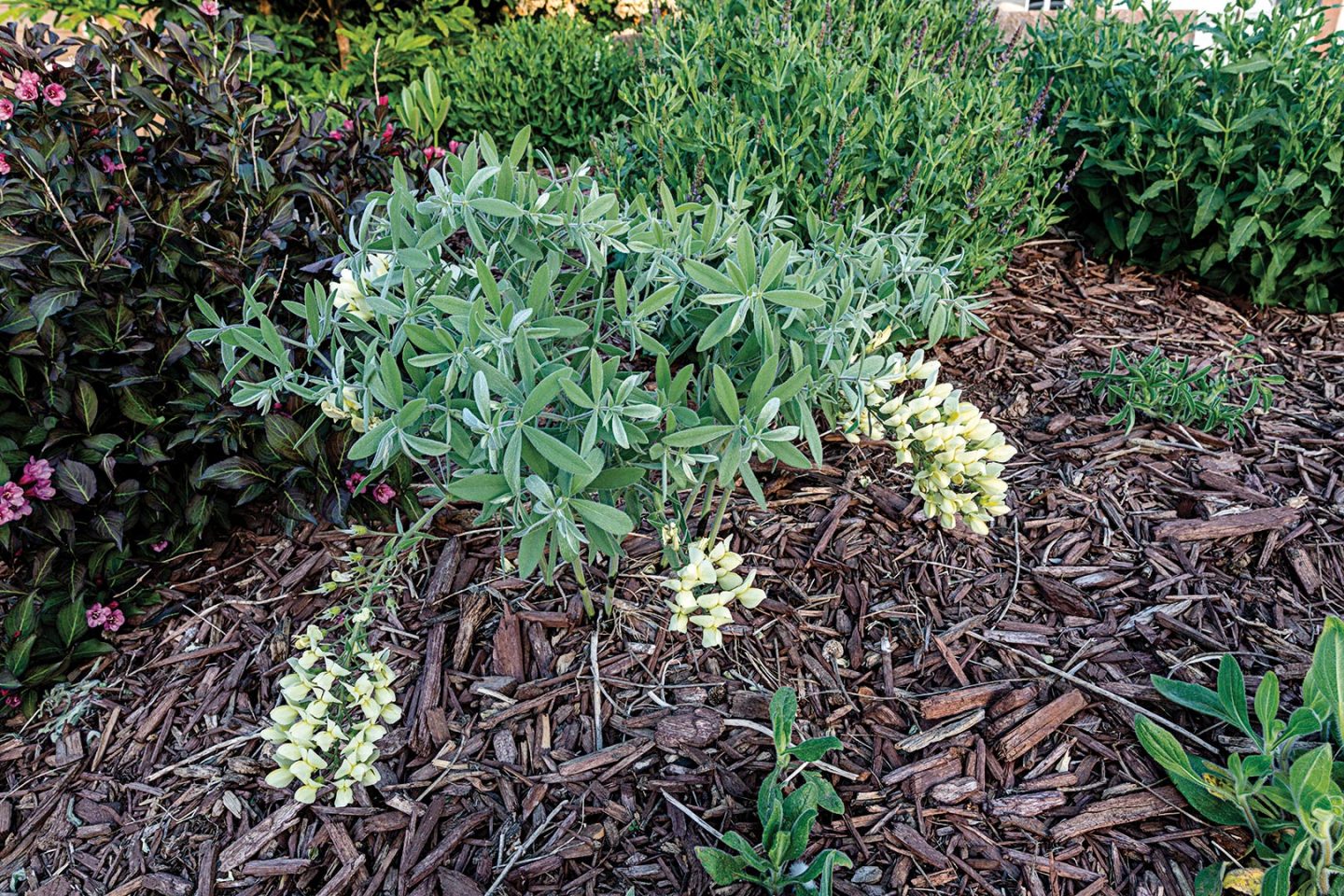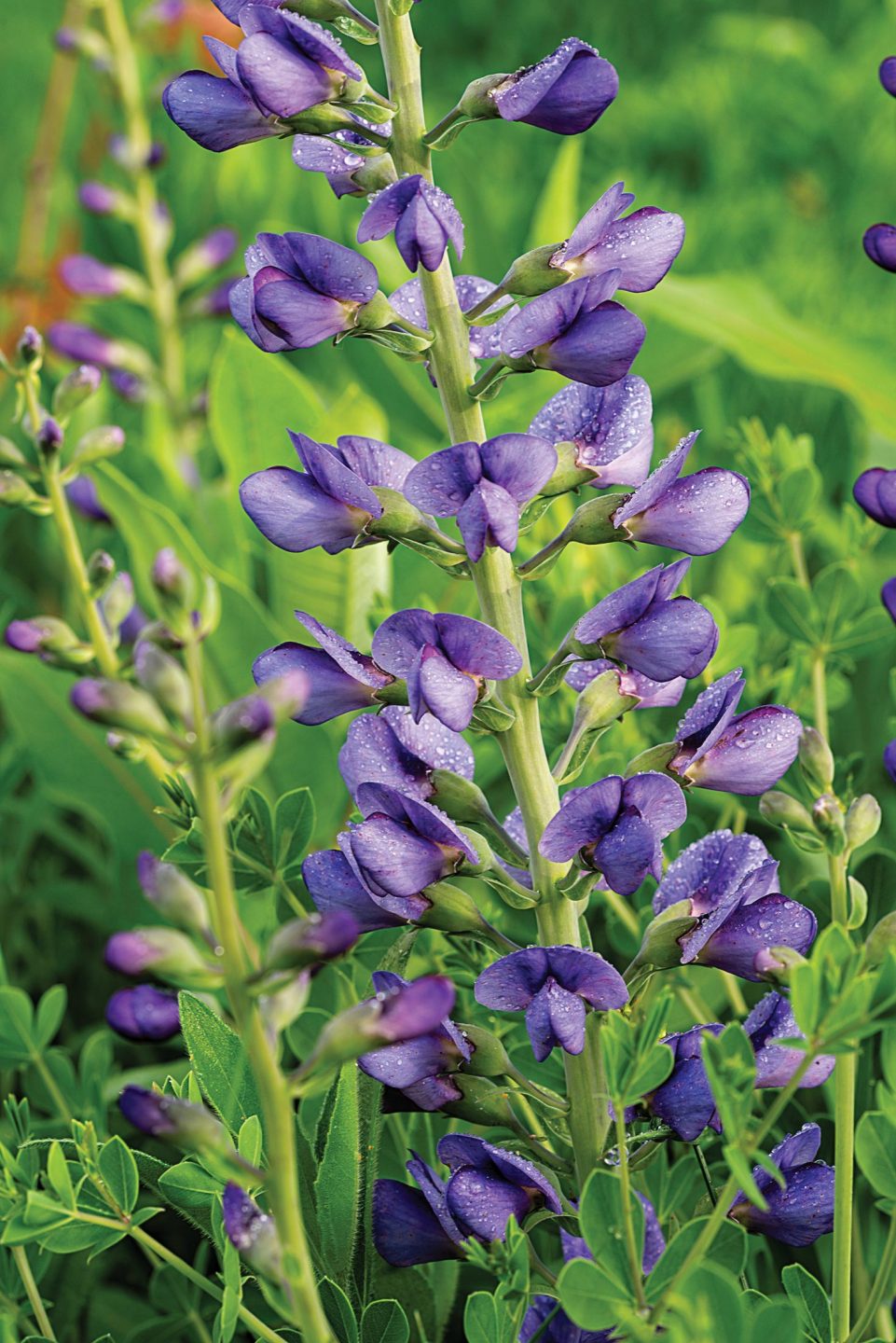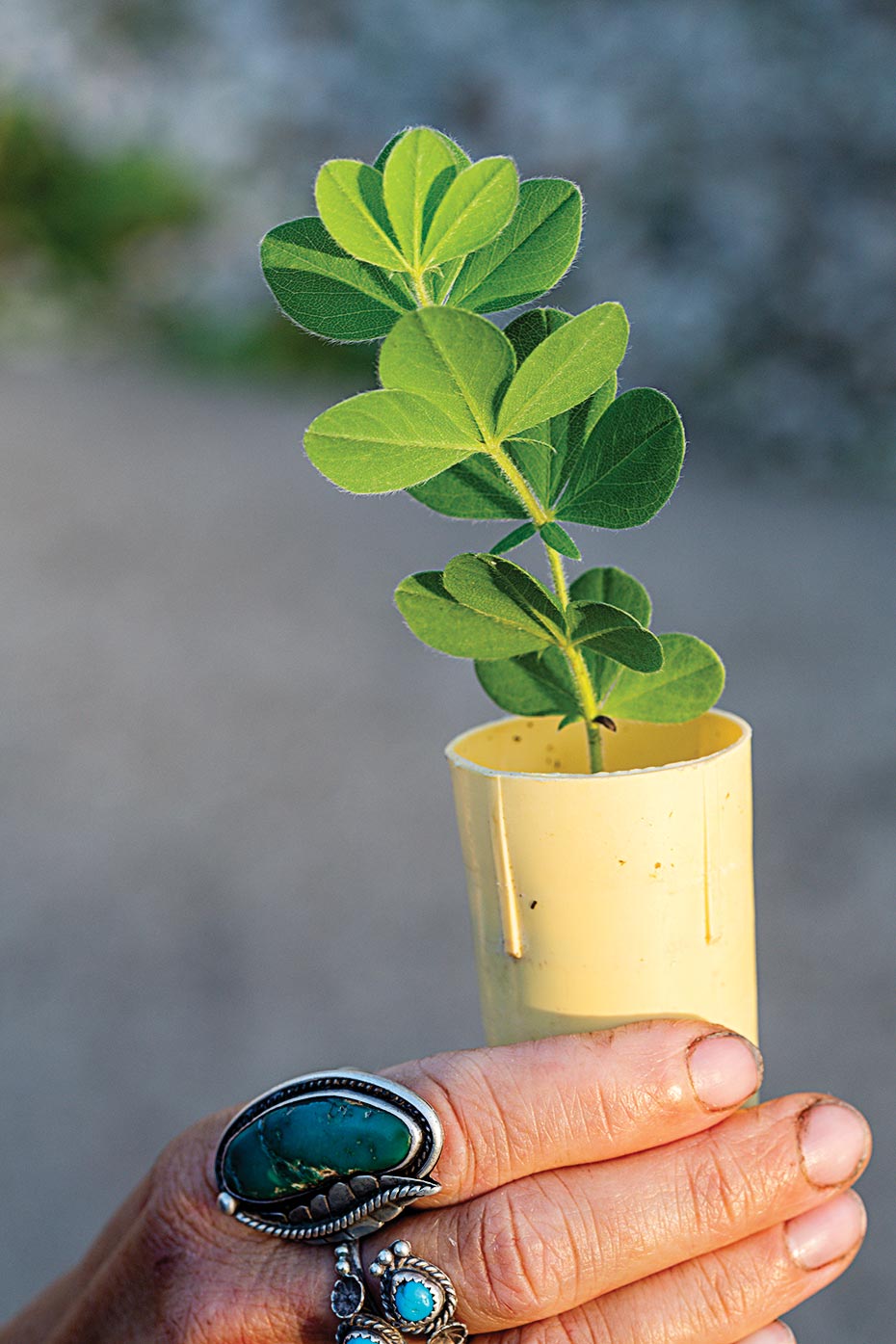
Story and photos by Gerry Steinauer, Botanist
Ask any horticulturalist what wildflowers make good ornamentals, and wild indigos are usually near the top of their list. Fortunately, Nebraska is home to three native wild indigos — plains, blue and white — all of which are easily started in greenhouses and transplanted as seedlings into flower gardens or established from seed or transplants in backyard prairies.
For many, the most appealing aspect of wild indigos as ornamentals is their bush-like shape and tall, colorful spikes of spring-blooming flowers. I am a fan of their large, inflated seed pods that remain attached to the spikes well into fall; they add a unique touch to our small backyard prairie in Aurora. But best of all, once established, these deep-rooted, hardy perennials require little care and will add beauty to your landscape for years to come.
Nebraska’s Wild Indigos
Belonging to the pea family and also known as false indigos, our state’s three wild indigos inhabit tallgrass prairie in southeastern Nebraska. Cattle tend to avoid grazing wild indigos, so they are usually more abundant in grazed pastures compared to un-grazed or hayed prairies.
Plains wild indigo (Baptisia bracteata) is our most common and widespread species. It is a much-branched, stout plant reaching a foot in height and coated throughout in short, velvety hairs. Its large, creamy-yellow flowers begin blooming in early May, somewhat earlier than our other wild indigos. The flower spikes spread outward with their tips often touching the ground, and their oval seed pods reach 2 inches in length, tapering to a sharp-pointed tip.

In contrast, blue wild indigo (B. australis) is the rarest of our wild indigos. Botanists speculate that prior to Euro-American settlement, it grew in Nebraska only on limestone soils in Jefferson County. In the mid-1900s, many crop fields in southeastern Nebraska were replanted with prairie grass seed harvested in Kansas, where the plant is common. It is likely blue wild indigo seed was occasionally harvested along with the grass seed, establishing additional populations of the wildflower.
Blue wild indigo plants are 1 to 2 feet tall and, unlike plains wild indigo, have stems and leaves that are hairless, but unlike white wild indigo, they are not waxy. Their upright flower spikes are adorned with intense blue to blue-violet blooms, which begin to open in late May. The oblong seed pods have a sharp-pointed tip and reach 2 inches in length.
White wild indigo (B. alba), perhaps the most grazing-tolerant of our wild indigos, can survive even in heavily-grazed pastures. Typically reaching about 3 feet tall in prairies, it can tower to over 5 feet in gardens. The wildflower has smooth, waxy bluish-green stems with many ascending branches, each plant producing one to several flower spikes that stretch to an impressive 18 inches in length, rising well above the foliage. The white flowers, which bloom from late May through June, are about an inch long and have a distinct purple spot at the base of the uppermost petal. In mid-summer, the inch-long, short-beaked, oval seed pods ripen from a vibrant chartreuse green to a light charcoal black.
Greenhouse Seedlings
Bob Henrickson, Horticulture Program coordinator for the Nebraska Statewide Arboretum in Lincoln, has been growing and selling wild indigos for over 20 years. While heartily promoting the natives, he avoids cultivating the many wild indigo hybrids and crosses, such as “Screamin Yellow,” which has over a 100 flower spikes per plant, or “Dutch Chocolate,” which has dark brown flowers. “People are smitten by the hybrids’ colors, but I see more bumblebees on the flowers of the native wild indigos,” said Henrickson. Bumblebees, the primary pollinators of wild indigos, may prefer the natives over the hybrids because they provide more nectar and pollen for them to consume. The Arboretum annually grows and sells several hundred white and blue wild indigo plants.

“They go fast,” remarked Henrickson. He collects the seeds for growing white indigo plants from a prairie in Cass County, while the blue indigo seeds are harvested from garden plants originating from Kansas seed. The plants are too few and far between in Nebraska to support seed collection.
Henrickson only occasionally grows plains wild indigo. This is because, in most years, he cannot collect enough seed from local wild populations to grow greenhouse plants due to the baptisia seed borer. This tiny black weevil with a long snout lays its eggs inside plains wild indigo pods, and the maturing grubs consume nearly all the seeds. The borer prefers this species and is far less attracted to white and blue wild indigo pods, allowing them to consistently produce seed.
Before planting, Henrickson scarifies the hard-coated indigo seeds by placing them in a coffee can, adding hot water just below the boiling point, and letting them sit overnight. The heat breaks down the seed coat, allowing germination. He then plants the seeds in small containers filled with potting soil and places them in a cooler for a month.
Wild indigo seeds, and those of most other native plants, must undergo a period of cold temperature to germinate. This prevents them from germinating in their first summer or fall and exposing their tender seedlings to the harsh winter cold.
In late February, after stratification, Henrickson places the containers in a warm greenhouse, and the wild indigo seedlings are ready for sale and transplanting in May. The first-year seedlings are rather scraggly with few leaves, which turns off some customers, but these plants will survive transplanting. Second-year seedlings are more robust, and the plants often bloom in their
third year.

“People need to be patient with wild indigos; the payoff takes time,” said Henrickson.
He recommends transplanting the seedlings into well-drained soil in full sun. Wild indigos can survive in partial shade, but their foliage and blooms will be less vigorous. Once established, the mature, deep-rooted plants will not survive transplanting.
A Top 10 Native Ornamental
Based on their showiness, hardiness and ease of care, Henrickson ranks wild indigos among his top 10 favorite wildflowers for use as ornamentals. In addition to their beauty, he admires their pest resistance, hardiness and drought tolerance. He has planted wild indigos in gardens as far west as Scotts Bluff County, where they do well with watering. In eastern Nebraska, mature plants require little to no watering.
He also appreciates that the plants are long-lived. Case in point, a friend of mine still enjoys the plains wild indigo he planted in his Lincoln flower garden over 20 years ago. In my backyard prairie, the white wild indigos I seeded nearly 25 years ago are still thriving.

Lastly, another important reason for using wild indigos as ornamentals is that they are native plants. Unfortunately, many non-native ornamentals introduced from Europe, Asia and other distant lands, such as yellow flag iris, Amur honeysuckle and ox-eye daisy, have escaped cultivation and invaded wetlands, woodlands and prairies, displacing native plants. Wild indigos pose no such threat to Nebraska’s landscapes.
In conclusion, if you’re looking to enhance your landscaping, I strongly encourage you to go native and plant wild indigos. Ornamentals don’t get much better than this.
